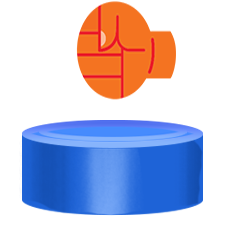Install Steam
login
|
language
简体中文 (Simplified Chinese)
繁體中文 (Traditional Chinese)
日本語 (Japanese)
한국어 (Korean)
ไทย (Thai)
Български (Bulgarian)
Čeština (Czech)
Dansk (Danish)
Deutsch (German)
Español - España (Spanish - Spain)
Español - Latinoamérica (Spanish - Latin America)
Ελληνικά (Greek)
Français (French)
Italiano (Italian)
Bahasa Indonesia (Indonesian)
Magyar (Hungarian)
Nederlands (Dutch)
Norsk (Norwegian)
Polski (Polish)
Português (Portuguese - Portugal)
Português - Brasil (Portuguese - Brazil)
Română (Romanian)
Русский (Russian)
Suomi (Finnish)
Svenska (Swedish)
Türkçe (Turkish)
Tiếng Việt (Vietnamese)
Українська (Ukrainian)
Report a translation problem




Be warned that the demo you tried corresponds to the very beginning of the game, and consists more or less of an easy and quite directed tutorial. Very quickly, you will notice that progressing in the game without the help of the Journal validations becomes much more difficult...
Nevertheless, even if we do not recommend playing this way, as it would make the game nearly impossible to finish, you can still try: all you have to do is not to validate any of the pages of the diary (except the first one, which is the only mandatory one). Good luck for that! :)
Is this "person" or "unfortunate person?" Is this "Warrior" or "Enemy"? Is this "Pilgrim" or "Priest" or "Pious Person?" Is this "Sun" or "Divinity" or "God"? I was debating the validity of each interpretation as I went through the murals and it was a bit disappointing that exactly one of those words got to be correct each time. It's also a little disappointing that once you had all the words for a sentence, you got the correct translated grammar every time.
I suspect when I play this I will also opt to not use the journal confirmations.
I probably will also avoid the confirmations as much as possible, and would be relieved if the journal was able to be hidden by an option or something so that the images didn't give away anything either. I didn't find myself needing them in the demo and I found seeing them took away some of the satisfaction of understanding without aids.
I really like being able to assign terms to each glyph myself though. That's all I would need.
When I saw this game, I was expecting less hand-holding because I thought it was going to be more about deciphering languages. I wish there was a different mode or just an option to opt out of the illustrations/confirmations, and they could present a warning if that's not the intended experience.
If the demo is representative of the whole game, there's already tons of context clues to use as a hint for what each of the glyphs mean.
I invite you to try the full game when it's available in order to have a better idea of its difficulty, as well as of the interest/necessity of the validation.
This is the kind of game where I would absolutely want to mess up as badly as possible, misunderstand something in the worst way, and spend hours trying to figure out my mistakes. Please let me play this way!
Now onto the game itself. I often come up with 2-4 meanings for each letter/symbol (haha here it comes) and would be able to eliminate half of them during subsequent encounters with them. However there are still cases where I get it completely wrong (I thought the shapehead people were mortal rulers of a kingdom before notebook check) and other times they weren’t presented very clearly with character actions only so I am glad that the game gives me an opportunity (not forced if you don’t do it and not easily cheesed if you don’t spam it) to validate them before I make further speculations based on wrong assumptions (which would get very annoying if I were forced to backtrack to every single time they appeared)
I would definitely have expected "find" to be treated as "search" + some kind of perfective suffix
Overall, I like the picture-based validation, as long as there's enough usage of a glyph that I've already basically figured it out on my own already so it's just checking.
It's a shame because it can be easily rectified by having the computer screen continuing to display the illustrations and the glyphs you combined together, so that you can enter it in the book yourself if you want to. The yellow computers that also automatically enter glyphs in the book for you as well are not as big of a deal because you still figure out how they align on your own, so it's just QoL at that point. That said, it's definitely not as cool as entering it yourself, even if it's already obvious which glyphs are the equivalent of others.